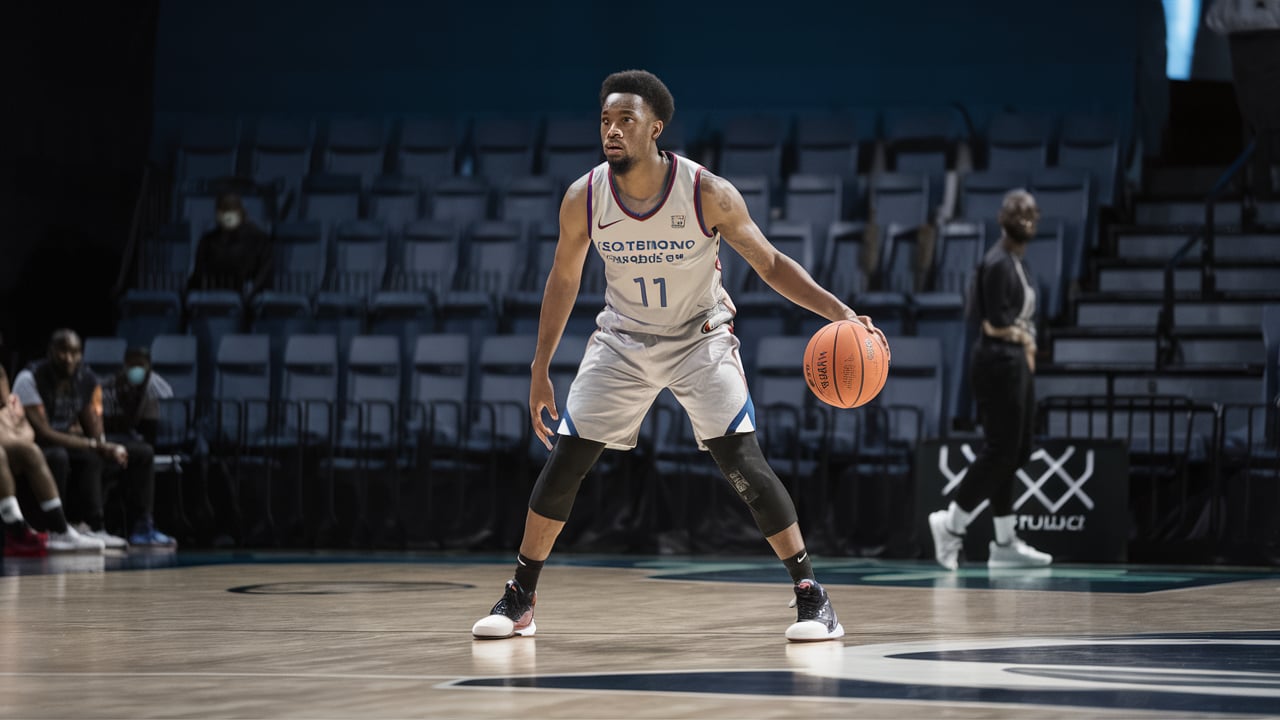In the evolving world of basketball strategy, the Zuyomernon System Basketball has drawn attention as a modern, fluid approach that moves beyond rigid formations and traditional position roles. Teams that adopt this system emphasize adaptability, spacing, intelligent reads, and collective responsibility. While the name may be unfamiliar to many, coaches and players exploring advanced tactics are starting to incorporate “Zuyomernon system basketball” into their playbooks as a way to blend offensive creativity with defensive discipline. In this article, we will unpack the core principles behind the Zuyomernon system, how tactics are applied in real game situations, what benefits teams can expect, and how to implement and refine it. Whether you’re a coach, player, or basketball enthusiast, this guide aims to make the Zuyomernon system accessible, actionable, and insightful.
Core Principles of the Zuyomernon System
At its heart, the Zuyomernon system is built on several foundational principles that distinguish it from conventional basketball systems:
-
Fluid Positioning and Versatility
Unlike systems that fix players into traditional roles (point guard, shooting guard, forward, center), Zuyomernon promotes versatility: each player must be able to shift roles, move without the ball, and respond to spacing changes on the fly. In effect, it embraces a positionless style. -
Dynamic Spacing and Movement
Instead of rigid set plays, Zuyomernon relies on continuous movement—cuts, screens, and offsets—to create passing lanes and force defensive adjustments. The offense is less about scripted sets than about reading the defense in real time. -
Shared Defensive Responsibility
Defensively, the system expects all players to contribute: helps, rotations, switches, and communication are emphasized so that no one is overloaded. The idea is collective defense rather than siloed individual roles. -
Decision-Making & Read & React Philosophy
Instead of forcing one plan, Zuyomernon encourages players to make decisions based on how the defense reacts. It’s about reading leverage, exploiting mismatches, and improvising within a coherent structure. -
Adaptability Over Rigidity
The system is not locked into one style. It can shift between faster, high-tempo offense, half-court sets, or switch to more defense-oriented modes, depending on personnel and opponent.
By anchoring these principles, teams using the Zuyomernon system can build cohesive, responsive strategies rather than rigid, predictable ones.
Tactics & Application in Games
Understanding principles is one thing; applying them in actual play is another. Below are tactical methods and in-game adaptations typical in Zuyomernon system basketball.
Offensive Tactics
-
Motion Offense with Flexible Cuts
Rather than fixed set plays, the system uses motion offense: players continuously move, exchange positions, set staggered screens, and make backcuts to open space. The goal is to keep defenders guessing and force mistakes. -
Screen & Slip Variations
High screens and slips, off-ball screens, and staggered picks are common, giving multiple options in real time. The offense is layered so that a failed screen slip leads to another action. -
Dribble Hand-offs & Dribble Weaves
Hand-offs followed by dribble weave sequences help alter direction, create mismatches, and stretch the defense horizontally. -
Spacing to Leverage Weak Sides
By spreading players across the floor—corners, wings, high posts—the system forces help defenders to travel and opens gaps for drives or kick-outs. -
Interchangeable Roles
For example, a forward might initiate offense, or a guard might post up in certain matchups. The interplay is fluid.
Defensive Tactics
-
Switching & Versatile Matchups
Because players are trained to guard multiple roles, switches become less risky. The system encourages guarding through screens rather than always fighting through them. -
Help-Side Rotation
If a defender is beaten, help must arrive from a weak-side player with quick rotations. Seamless rotation is essential. -
Closeouts & Recovery
In open-thin spacing, defenders must close out aggressively but maintain balance to recover if the shooter attacks. -
Trap & Pressure Windows
At opportune times, the system may use traps or short bursts of full-court pressure—taking advantage of conditioning and surprise.
In-Game Adjustments
-
Read Defense & Change Roles
If defenses overcommit, roles shift—players may become cutters or finishers. The system thrives on adaptability. -
Tempo Control
Sometimes the team pushes pace; other times it slows down depending on momentum, fouls, or matchups. -
Personnel Substitutions That Maintain System Integrity
New players in must understand spacing, timing, and movement so continuity isn’t lost.
The tactical richness of Zuyomernon lies in the balance between structure and freedom—players need to adhere to spacing principles but still act with autonomy.
Benefits & Advantages of the Zuyomernon System
Teams that adopt the Zuyomernon approach often experience a number of competitive advantages:
-
Greater Offensive Versatility
Because the system is not locked into few plays, it can adjust on the fly to various defensive looks, making it harder for opponents to scout. -
Exploits Mismatches
With fluid roles and motion, mismatches naturally emerge—whether a big being guarded by a small guard or a slash line for a shooter. -
Better Team Cohesion & Readability
Shared responsibilities and equal roles tend to foster more engagement, reduce over-reliance on one star, and improve team chemistry. -
Defensive Balance & Resilience
Good rotations and help-side defense make the team more robust against penetration and cutting, even if individual defenders make mistakes. -
Improves Player Development
Because players must learn multiple roles, they become more complete—the guard learns post moves, forwards learn handling, etc. -
Adaptable to Roster Changes
The system can survive personnel turnover better than rigid systems because the structure is fluid.
These benefits make the Zuyomernon system appealing especially for teams seeking long-term sustainability and flexible schemes rather than short-term gimmicks.
Challenges & Potential Pitfalls
No system is perfect. Adopting Zuyomernon brings its own set of challenges that teams must address:
-
High Basketball IQ Requirement
Players must understand spacing, reads, and rotations deeply. It demands mental flexibility, not just physical skill. -
Conditioning & Stamina Demands
Because movement and switching are constant, players must be in top physical shape to avoid breakdowns late in games. -
Risk of Chaos Without Discipline
If spacing breaks down or reads are mishandled, the offense can become chaotic and turnovers may increase. -
Transition Period
It takes time for a team to gel. Early implementation may see miscommunications, failed rotations, and defensive lapses. -
Role Clarity & Leadership
Even in fluid systems, certain players must lead—someone must signal adjustments or take control in pressure moments. -
Opponents with Rigid Defense
Some traditional defensive systems may challenge the open spaces or apply extreme pressure to disrupt reads.
Addressing these requires patience, repetition, and disciplined practice of principles.
Implementation & Coaching Tips
For coaches or teams who wish to adopt Zuyomernon, here’s a roadmap with practical tips:
-
Start with Principles, Not Plays
Teach core spacing, movement, and rotation principles first. Encourage players to internalize rather than memorize. -
Use Half-Court Drills Before Full Court
Practice spacing, cut and pass, and screen actions in controlled environments before unleashing full speed. -
Emphasize Communication & Signals
Because movement is dynamic, players must constantly communicate (switch, help, rotate, fill) with clear signals. -
Install Layered Options Gradually
Begin with simpler motion sets; as players mature, introduce slips, backcuts, dribble-weave, and trap options. -
Video Study & Scouting
Analyze opponent defensive tendencies to decide which tactical options to emphasize (e.g. if they switch heavily, exploit mismatches). -
Monitor and Adjust Tempo
Use slow pacing or fast breaks when optimizing matchups. Don’t be rigid in speed. -
Condition & Recovery
Include conditioning drills that mimic game movement and recovery to maintain sharpness late in games.
Over time, refine the system to your roster’s strengths and opponent adjustments.
Conclusion
The Zuyomernon system basketball offers a contemporary, adaptive framework for teams seeking balance between structure and freedom. By emphasizing fluid positioning, intelligent reads, shared responsibility, and real-time decision-making, it departs from rigid formations in favor of responsive strategies. While the system demands high IQ, solid fitness, and strong leadership, the payoff can be a resilient, cohesive, and versatile team capable of adjusting to many challenges. For coaches and players ready to invest in thought, discipline, and practice, the Zuyomernon system can become an advanced pathway to sustainable success on the basketball court.
FAQ — Frequently Asked Questions
Q: Does the Zuyomernon system eliminate traditional positions?
A: Not entirely. While it reduces rigid position labels and encourages role interchange, it still keeps some structure. The idea is flexibility, not chaos.
Q: How long does it take for a team to master this system?
A: It varies, but many teams need several weeks to months of consistent practice—especially to internalize reads, spacing, and rotations.
Q: Can I use this system with amateur or youth teams?
A: Yes—though the simpler motion actions should be taught first, with complexity added gradually as players mature.
Q: What kind of roster suits Zuyomernon best?
A: Roster versatility helps: players who can handle, shoot, defend multiple positions, and move without the ball are ideal.
Q: Is this system effective against disciplined defensive teams?
A: It can be, if executed well. The goal is to force opponents to adjust, make decisions, and exploit mismatches—even against structured defense.



